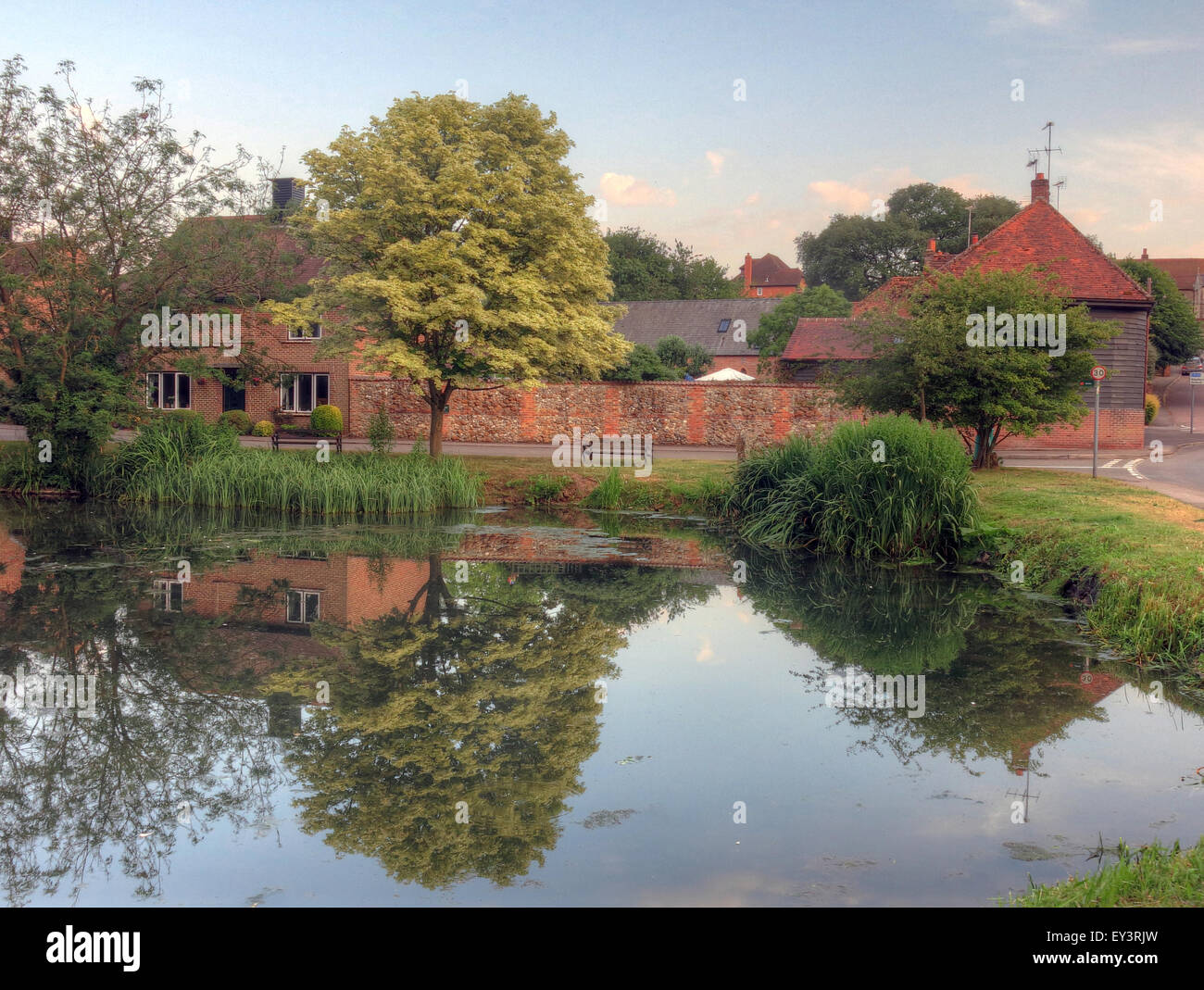The pond, East Ilsley, Newbury, West Berkshire, England, UK, RG20 7LP

Image details
Contributor:
Tony Smith / Alamy Stock PhotoImage ID:
EY3RJWFile size:
33 MB (1.9 MB Compressed download)Releases:
Model - no | Property - noDo I need a release?Dimensions:
3910 x 2947 px | 33.1 x 25 cm | 13 x 9.8 inches | 300dpiDate taken:
16 July 2015Location:
Church Hill,East Ilsley, Newbury, Berkshire,England,UKMore information:
East Ilsley Sheltered in a dip in the downs just off the A34 Southampton to Oxford and the Midlands trunk road is the ancient village of East Ilsley. The A34, once an important coaching route, originally passed right through the village and just to the north of the village is the ancient Ridgeway. So East Ilsley, once also known as Market Ilsley or Chipping Ilsley, had a prominent and important position. The origin of the name is unclear. Originally “Hildeslei”, It could mean “place of conflict or battle field” and it is known that Alfred defeated the Danes in the Battle of Ashdown which took place nearby. Alternatively it could mean a woodland clearing of a man called Hild, and this meaning is supported by at least two sources. The nearby village of West Ilsley was originally a hamlet within the parish of East Ilsley. East Ilsley once held an important weekly sheep market and had claims on the title of sheep farming capital of England. In the 19th century the sheep market was second in size only to Smithfield market in London. The origins of the then small East Ilsley sheep fair can be traced back to the 13th century, but from from the 17th century a weekly sheep market was held throughout spring and summer. As many as eighty thousand sheep could be auctioned in a single day which demonstrates the importance of the fair. The last fair was held in 1934 and a plaque in the centre of the village records this event. Not surprisingly East Ilsley has had many inns and pubs. In the 19th century twelve were known to exist serving the coaching route from Oxford to Newbury and the sheep fairs, and at the beginning of the last century there were still eight. More surprisingly perhaps, when many villages have lost their village pubs, there are still two public houses in the centre of the village. Standing prominently on a hill away from the centre of the village is the village church, St. Mary's, parts of which date from the 12th century.